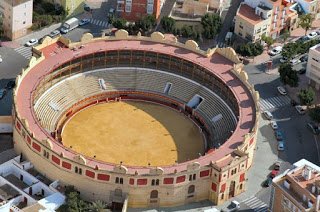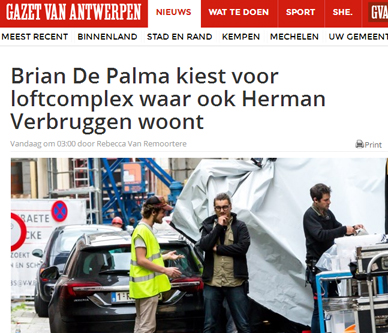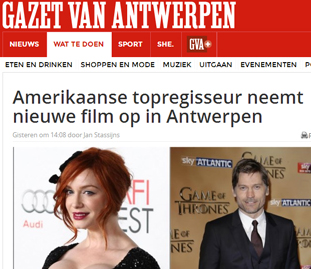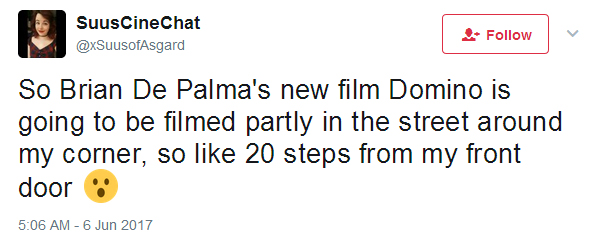Signing on to make the movie “was the easy part,” De Niro says. Then came the hard part. There’s a certain level of pressure that comes with playing a historical character, especially one who has achieved such mythic stature in the collective imagination as Capone. Researching the part, the Oscar winner read a book (likely My Years With Capone: Jack Woodford and Al Capone) that gave him crucial insight about the legendary gangster. “It was supposedly written by a young kid, a piano-player, a prep school-type kid,” De Niro recalls. “Capone would take him around as kind of, I felt, maybe as a chronicler of his exploits, and he played at one of his speakeasies.” To physically recreate Capone, De Niro says he watched footage of the gangster and “tried to gain as much weight as I could and shave my head more so I could look as round as I could in the time that I had to prepare for it.”
As for Ness, “I remember checking on him and his life — and it wasn’t as rosy as people might want to think,” Costner admits. “But the truth is, you’re stuck inside the lines of something that’s written… I understood history of him, but I really was having to play this character.” From there, “what we were trying to do was get the clothes right, because we had a really good script.”
And such clothes! The cast’s sharp Prohibition-era suits are credited to Armani (though costume designer Marilyn Vance reportedly took issue with the designer’s credit). “I wasn’t even familiar with Armani, that shows you what a country bumpkin I was,” Costner says. De Niro remembers another piece of the mise-en-scene fondly: “There was a barber’s chair that I wish I had held onto. I think they paid $5,000 for it at the time,” he recalls. (He spends the film’s opening scene in it). “It was a great chair. I’m sorry I didn’t get it.”
Behind the Scenes
A $5,000 mosaic-covered barber chair is the least of it when you look more closely at Capone’s opulent surroundings, which provide stark contrast to the grimy streets and modest apartments occupied by the Ness’ Untouchables throughout the film. Capone is mostly kept in such lavish settings as the Lexington Hotel, where he lived, or the opera, and only comes face-to-face with Ness in two scenes: First in the lobby of the Lexington, and then again at the very end, in the courtroom where he is found guilty of tax evasion.
“I had trouble with some of the scenes with [De Niro], because my character was very straight-arrow, and Robert was able to jump off the page,” Costner remembers. “I was trying to survive with my straight-arrow language against someone who was throwing a level of street language at me that had a level of improv to it. So it was hard for me to survive in some of those scenes, and Sean talked to me a little bit about it.”
Malone and Ness’ mentor-mentee relationship “was very real” between the actors playing them, Costner says, and the dynamic among all the Untouchables “couldn’t have been better,” according to Connery. “All the actors were very experienced and professional. Everybody played an important element in the film.” (Costars on Ness’ team included Charles Martin Smith and Andy Garcia.)
Costner also says he felt “in sync” with De Palma, whose Scarface had come out four years prior. “Brian was so open for ideas and suggestions,” Connery added. “Working with him was everything that I expected.”
De Niro had worked with the filmmaker years before, when both were at the very beginning of their careers, on 1968’s Greetings, 1969’s The Wedding Party, and 1970’s Hi, Mom! “This was a different type of thing altogether than [what] we did when we were young,” he says of The Untouchables, adding that, “Brian’s style of shooting was helpful. He’s a good director with actors.”
“Violent, Violent Men”
“I’ve always not appreciated when [violence] wasn’t handled right in movies,” Costner says. “Violence is vulgar, and a lot of times there’s not a lot of ballet to it. The Untouchables was about a violent time and violent, violent men.”
It certainly was. “The essence of the movie [was] about street violence,” Connery writes — and his character understood that better than anyone. The actor counts an early scene between Malone and Ness — “not in particular because I suggested it” — among his favorites. Hiding in a church, the old cop gives the naïve G-man a master class in justice, Chicago-style.
“You want to get Capone? Here’s how you get him,” Malone instructs Ness. “He pulls a knife, you pull a gun. He sends one of yours to the hospital, you send one of his to the morgue. That’s the Chicago way, and that’s how you get Capone.”
Later, after intercepting a booze shipment at the Canadian border with some Mountie assistance, Malone savagely murders an already-dead body to scare one of Capone’s men, oblivious that the victim was already a corpse, into talking. “I do not approve of your methods!” the horrified Mountie captain exclaims. “Yeah? Well, you’re not from Chicago,” Ness replies. And so, the student has become the master.
“It was all about expectancy,” Connery says of the shocking moment. “The scene was very realistic and quite vicious if I must say. Very creative to say the least.”
Another memorable demonstration of brutality comes from De Niro’s Capone after Ness’ first successful alcohol raid. Gathering all of his top cronies for an extravagant meal, he delivers a speech about the importance of teamwork, likening his crew to a baseball team — and one unnamed member to a showboating player.
“Sunny day, the stands are full of fans,” he muses. “What does he have to say? ‘I’m goin’ out there for myself. But I get nowhere, unless the team wins.’”
As his cigar-chomping cohorts murmur their agreement, he takes a baseball bat to the head of the guy who let him down.
“It’s a touching scene,” De Niro says when asked about the horrific sequence. “I’m joking.”
“The baseball [scene] is a memorable one — whether good or bad, but it was memorable,” he says, more seriously. “The rhythm of the dialogue in that one especially is so specific that you really have to know it so that it will work.”
However, The Untouchables’ biggest showstopping “ballet of death,” as Costner calls it, might be the Battleship Potemkin-inspired train station gunfight in which Ness and George Stone (Garcia) engage in a shootout with some of Capone’s men across a wide staircase — as a baby carriage rolls down the steps the whole time.
Costner remembers pestering De Palma with constant questions about the rest of the players in the complicated sequence. “Constantly, when the camera would fall on me, I would say, ‘Now, is that guy still alive to my left or to my right?’” he recalls. “And he was like, ‘Which guy? I’m on you right now.’ I said, ‘I understand, but I’ve got to know: Has that guy already been shot? Or is there another one coming? Or is there somebody over here?’ Brian would look at me and I said, ‘I need to act that. If [Ness is] going to survive, that means he has to have a sixth sense about where people are.’”
He also made a point of never shooting his gun more times than it would realistically have had bullets, and then reloading after he did. “It drove Brian a little crazy, but then he actually came to love it,” Costner says. “He was like, ‘What’s going on here?’ and I said, ‘Well, I’ve already shot [all my bullets]. Why don’t you make sure that you tie some drama up in this boring part that you call reloading?’”
 The lack of availability of the bullring (Plaza de toros de La Malagueta) in Málaga was the key reason the Domino production decided to film in Almería next month instead of Málaga, according to an article posted yesterday by Francisco Griñán at Diario Sur. The article mentions Kevin Bacon as part of the cast, but I have confirmation that Bacon is not actually involved in Domino. Here is an excerpt from Griñán's article, with the help of Google Translate:
The lack of availability of the bullring (Plaza de toros de La Malagueta) in Málaga was the key reason the Domino production decided to film in Almería next month instead of Málaga, according to an article posted yesterday by Francisco Griñán at Diario Sur. The article mentions Kevin Bacon as part of the cast, but I have confirmation that Bacon is not actually involved in Domino. Here is an excerpt from Griñán's article, with the help of Google Translate:







 Thanks to Lear for pointing us to the listings for Brian De Palma's Domino at the
Thanks to Lear for pointing us to the listings for Brian De Palma's Domino at the 



